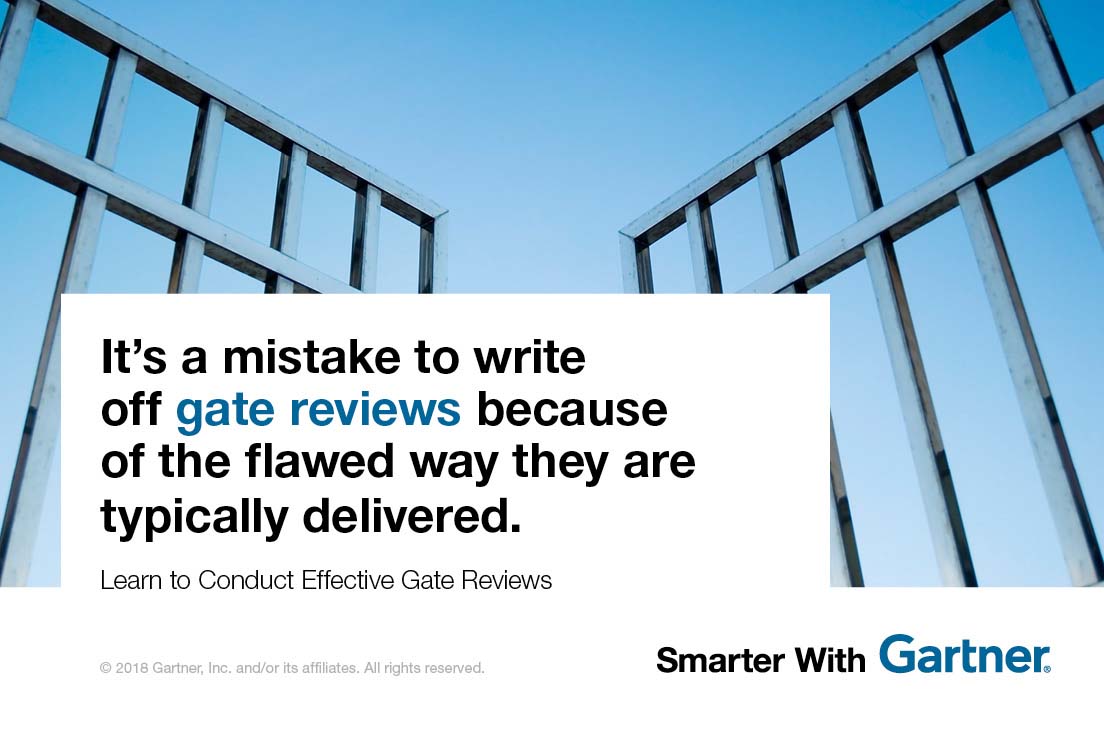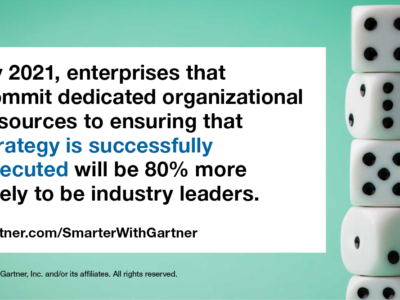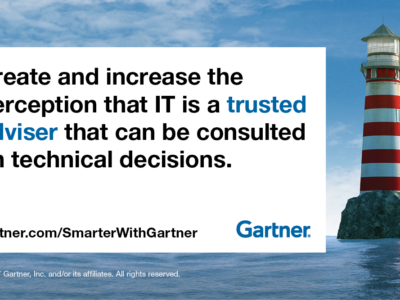Program and portfolio management (PPM) leaders should introduce or refine stage-end reviews to increase project or program value and reduce risk.
Periodic gate reviews of projects and programs are common, but rarely add real value. Too often, organizational management and the project management office (PMO) leadership do not take any concrete actions from reviews. The result is that many involved in the process, especially in the agile development world, question their value altogether.
“Get candid feedback from stakeholders about what is and isn’t working for them”
“It’s a mistake to write off gate reviews because of the flawed way they are typically delivered,” says Robert A. Handler, research vice president and distinguished analyst at Gartner. “They have a valuable role to play in mitigating risk and driving incremental value. It’s up to PMO leaders to make them effective in their organization.”
Handler shares four best practices to improve the effectiveness of gate reviews.
Assess current phase or stage review practices; abandon if necessary
Reviews that drive no actions or decisions consume resources and time that would be better spent on efforts that produce results. Take your phase/stage/toll gate review process and get candid feedback from stakeholders about what is and isn’t working for them. Then identify, refine and agree on a range of actions that can or must result from a review. Here are some typical actions resulting from a review that add value:
- Redefine project timeline. Clearly define major changes to due dates and deliverables and develop a plan reflecting the changes.
- Changes in roles. Review the effectiveness of those assigned to the project or program. Determine whether the staff in leadership roles are demonstrating the necessary skills and abilities.
- Review direction and expectations. Ensure the project or program is still well aligned to the intended business strategy and goals.
- Cancel plans or put them on hold. If time is needed to process the results of the review, it may be necessary to suspend or cancel work and avoid spending that may deliver less value than originally anticipated.
Spell out who makes decisions, and make those decisions stick
Actions without owners get dropped. It’s important to identify the roles of those who participate in reviews and ensure that they have clear responsibilities for implementing any decisions. Every decision stemming from a gate review should have a thoughtfully defined owner, time frame and process for completion.
“When gate reviews have become a maligned box-ticking exercise, it’s often the case that responsibility for them is delegated to people without authority or motive to implement any decisions,” says Handler. “As a PMO leader, you need to make sure that the roles selected for reviews are the right ones to take action, from both an organizational and political point of view.”
Prototype your changes, and make sure you are getting results
Many PMO leaders recognize the value of gate reviews and have already taken the steps above to ensure that they deliver more value. Next — in the spirit of driving positive action — they make the common mistake of pressing ahead with wholesale changes too quickly.
“No matter how solid your new review process looks, there’s nothing like actual use to prove or disprove that view,” explains Handler. “Plan a set number of reviews or set period of time as a trial period before imposing new processes on everyone.”
“Gate reviews can and should be used to cyclically review ongoing agile, Scrum and DevOps programs”
During the trial period, it’s important to define a series of potential outcomes that must be achieved from the new review process to demonstrate its value. For example, a meaningful target percentage of projects that are cancelled, or a target for occasions when a gate-review-driven change of direction has enabled project success.
Don’t exclude agile projects simply because they are agile
Agile method use is growing and the predominant view among agile professionals is that gate reviews are not necessary and should be kept out of the minutiae of solution delivery.
In fact, the best practices advocated here complement this idea. They are intended to steer the entire review process toward effective macroplanning, rather than interfering in day-to-day product delivery.
“Gate reviews can and should be used to cyclically review ongoing agile, Scrum and DevOps programs to protect against sunk cost bias and reaffirm links with broader business strategy and goals,” says Handler. “This is in harmony with some of the notions found in enterprise agile frameworks.”
Gartner clients can read more in “Drive Up PPM Value and Reduce Risk With Effective Gate Reviews” by Robert A. Handler.
Get Smarter
Gartner CIO Leadership Events
Learn more about CIO leadership and how to lead your enterprise through its digital journey
CIO Futures: The IT Organization in 2030
The IT domain in 2030 will evolve out of today’s agile practices and professional services models. CIOs will organize a fluid arrangement…









